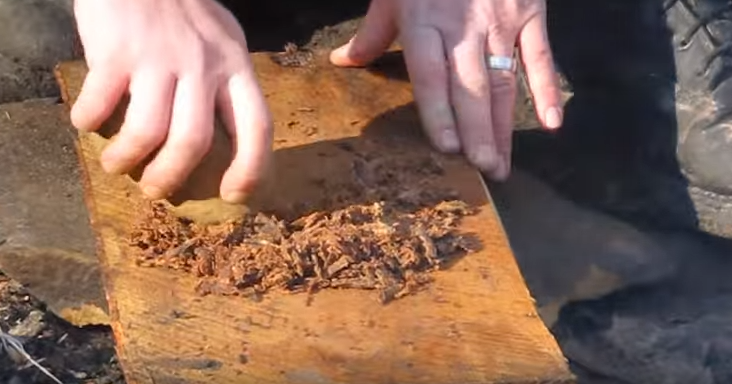The best way to ensure survival is to prepare for every aspect of life before it spins into chaos. This includes food.
An important consideration for any recipe in the last century up to today is the type of fat used in pemmican recipes. Beef tallow and beef marrow are the fats of choice, in addition to suet. Suet is the hard, beef fat found around the kidneys and loins of cattle. Avoid lard in your pemmican recipes. Lard is pork fat and I have found few recipes that recommend it going back 200 years.
Meat-Pulverizing Tips
You don’t have to crush the meat between two stones; you can use more contemporary approaches. These include:
- A hand-turned meat grinder. This gets the dried meat into small bits and you can continue to run it through in a series of batches to get it as fine as you want.
- A blender. Just make sure to do it in batches until you get the consistency you want.
- A food processor. But if there is any moisture at all, the speed of the processor will turn the meat into a paste, so grind the dried meat in bursts.
Beef-Trying Tips
I use a food dehydrator. It’s the same one I use to make jerky; I just extend the drying time. To test a piece, take it out of the dehydrator and tape it on the counter. It should make a hard sound rather than the dull thud you’d get from a piece of jerky. Next, snap a piece. If it breaks like peanut brittle, you’re done. If it bends, it needs more time.You also could hang the strips over a fire for two or three days. I tend to prefer the dehydrator but in the field, I’d use the fire method in a heartbeat
Fat-Rendering Tips
This is a slow process. You should start by cutting the tallow and/or suet into chunks. If you’re also adding marrow, slice that up into one-inch pieces. Add all to a cast-iron frying pan over low to medium heat and toss often. Eventually, the fat will pool into the bottom of the pan, leaving some brown chunks behind. Filter the fat to remove the chunks. If there are smaller bits and pieces of brown bits left in the pan, I’ll even run it through some cheese cloth to clarify the fat. Don’t let it smoke or burn. That will give the fat and the resulting pemmican an off taste.
Dried Fruit Tips
Whether I’m using fresh fruit or dried fruit bought at the store, I’ll put the fruits into a dehydrator. Even dried, packaged fruit has some residual moisture. Once the fruit is dried, I’ll pulverize it in the food processor or the blender to break it into bits.
Now that you have all that you need it's time to put it all together. This process is simpler than one would think so don't panic just yet.
Putting it All Together
I like a 1:1 mix of beef and fat. It’s easier to measure that way. For every cup of dried, pulverized beef, add a cup of fat. The fat should be warm, not hot and not congealed. Mix the fat and meat together with your hands or two spoons. I put it into a tabletop mix-master and use the dough hook to blend everything. If you’re off the grid you may have to use your hands.
Add the dried berries to your taste. I usually add a half-cup and mix it all together again. If you want, you can add some salt to suit your taste. For a cup of meat and a cup of fat plus a half-cup of fruit, I’ll add a half teaspoon of salt when I add the fruit so the salt gets blended into the mixture, as well.
If you want to make more, just double or triple the amounts. That’s the other thing I like about a 50/50 ratio of meat to fat. It makes the multiplication easier.
When done, I’ll spoon the pemmican into a cupcake pan and flatten the tops with the back of a knife. I then refrigerate it for about three hours and turn the tray over onto the counter. Each pemmican cake will be greasy to the touch, so place each one in a plastic sandwich bag unless you want to wrap it in a piece of rawhide. I tend to favor the plastic bags. You can store them in a cool, dark place, but mine usually ends up in the fridge.
Now that you have that information you should be able to make all of the pemmican that you need.
Have you made this survival food before? If so are there any tips or tricks that you can offer? If so let us know in the comments below.
Source: OffTheGridNews

Denise Eckert
Robyn Yeaman